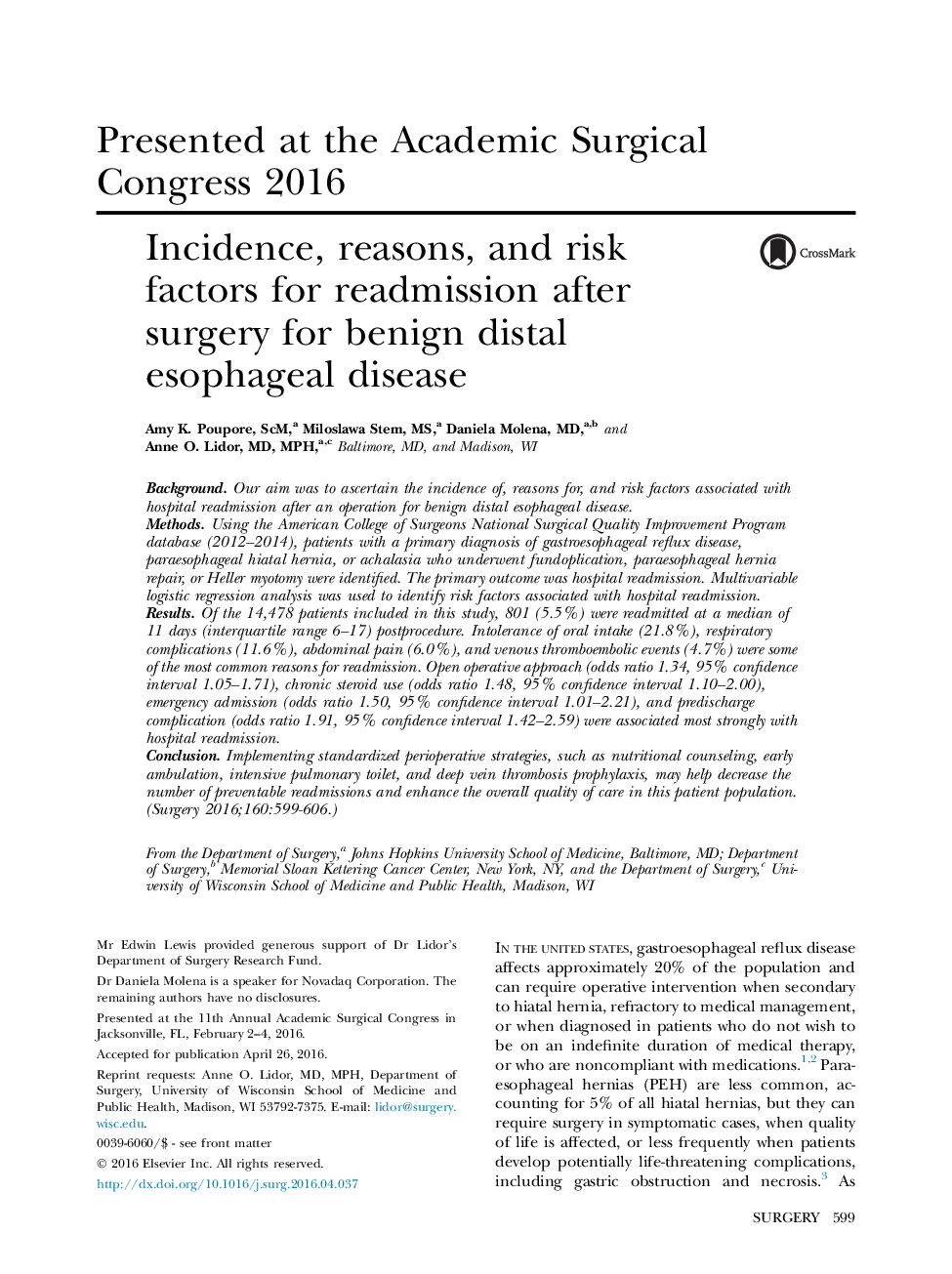| Article ID | Journal | Published Year | Pages | File Type |
|---|---|---|---|---|
| 6254852 | Surgery | 2016 | 8 Pages |
BackgroundOur aim was to ascertain the incidence of, reasons for, and risk factors associated with hospital readmission after an operation for benign distal esophageal disease.MethodsUsing the American College of Surgeons National Surgical Quality Improvement Program database (2012-2014), patients with a primary diagnosis of gastroesophageal reflux disease, paraesophageal hiatal hernia, or achalasia who underwent fundoplication, paraesophageal hernia repair, or Heller myotomy were identified. The primary outcome was hospital readmission. Multivariable logistic regression analysis was used to identify risk factors associated with hospital readmission.ResultsOf the 14,478 patients included in this study, 801 (5.5%) were readmitted at a median of 11Â days (interquartile range 6-17) postprocedure. Intolerance of oral intake (21.8%), respiratory complications (11.6%), abdominal pain (6.0%), and venous thromboembolic events (4.7%) were some of the most common reasons for readmission. Open operative approach (odds ratio 1.34, 95% confidence interval 1.05-1.71), chronic steroid use (odds ratio 1.48, 95% confidence interval 1.10-2.00), emergency admission (odds ratio 1.50, 95% confidence interval 1.01-2.21), and predischarge complication (odds ratio 1.91, 95% confidence interval 1.42-2.59) were associated most strongly with hospital readmission.ConclusionImplementing standardized perioperative strategies, such as nutritional counseling, early ambulation, intensive pulmonary toilet, and deep vein thrombosis prophylaxis, may help decrease the number of preventable readmissions and enhance the overall quality of care in this patient population.
